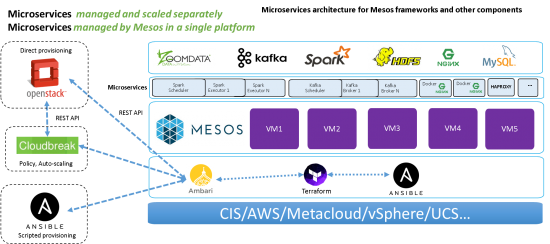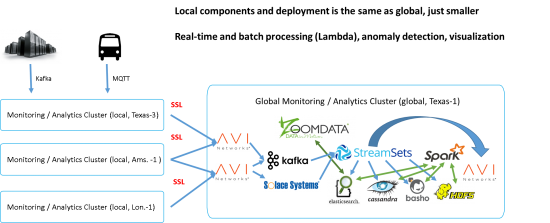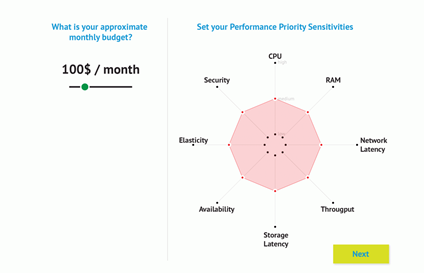We are really looking forward to next week in Barcelona @dockercon Europe. As a sponsor and exhibitor we are really excited to be showing what Cisco is innovating with @docker and how we are enabling and delivering the platform for the digital disruption era. We extend a warm invitation to anyone who is interested to see how this works. You can visit us at our booth, where we’ll be demonstrating all the innovations mentions in this blog. You can also visit our innovation day on Sunday or our pre-party, on Sunday night with our partner Container Solutions.
Before I preview the exciting innovations, if you’re not familiar with the Docker and Container ecosystem, please read the new ebook from The New Stack. It’s a must read for engineers, developers and those making business level decisions around Docker and Containers. The free download can be found at http://thenewstack.io/ebookseries/.

Dockercon Europe Preview
Project Contiv (http://contiv.io) addresses container networking and storage: infrastructure operational policies for container-based application deployment. Application intent such as docker compose, allows for declarative specification for an application’s microsevices composition Project Contiv compliments application intent with the ability to specific infrastructure operational policies for network storage and compute elements of the physical and virtual infrastructure directly mapping the application intent, with the infrastructure policy required.

So what are some of the infrastructure operational policies that most IT organization expects to specify for containerized applications?
- Security policies for applications for inbound/outbound as well as within application tiers.
- Network services policies- integration of L4-L7 services (Load balancers, firewall, encryption, etc.).
- Analytics and diagnostics policies.
- Physical infrastructure policies around bandwidth limit/guarantee per container, latency requirements, etc.
- IP allocation management policies.
- Storage policies around persistence storage, volume allocation, snapshotting etc.
- Compute policies around performance requirements and SLA etc.
- Corporate and government compliance policies.
You can read more about Project Contiv at http://blogs.cisco.com/datacenter/project-contiv
Mantl Version 0.4 (http://mantl.io) is a layered stack that takes care of the system integration challenges of today’s container infrastructures. By utilizing best-of-breed tools at each layer of the stack, Mantl provides an out of the box experience for teams looking to focus on their application and provides the underlying infrastructure for project Shipped. Mantl makes use of Terraform to provision virtual machines; Apache Mesos & Kubernetes for cluster management and Consul for service discovery, higher level services and functions are themselves containerized, or utilize custom Apache Mesos frameworks, to support saleable data processing and collection of assurance data.
The high-level architecture of Mantl is below.

Shipped (http://ciscoshipped.io) is an end-to-end solution for developers and development teams looking to deliver cloud (internal, external, and hybrid/multi-cloud)-based solutions quickly. Shipped provides an intuitive solution for building containerized microservices, and an environment in which to deploy and run those applications. Shipped simplifies your DevOps tasks, and lets you focus on building and delivering innovative products and services.

Data Platform: The ELK stack is built into Mantl as an Apache Mesos framework. This means that developers can use Mantl’s Terraform modules to provision a cluster, setup the system, and immediately start building data-driven applications. On its own, this functionality is powerful. However, because Mantl uses an Apache Mesos framework for its data tooling, it can (and does) take advantage of Mesos’ scheduling and hardware utilization features. In addition to this, the frameworks provide extra functionality. The diagram shows how this works.

In addition to address data analytics aspects of the application architecture, we are also address realtime and batch processing use cases, including IoT, see diagram below.

Application Policy Intent Framework addresses the business objectives of the developer by enabling a framework where the intent of the application can be selective (low to high) and enforcement and definition across the multiple deployment environments is handled by Mantl and Contiv. The sensitivities are CPU, Ram, Network Latency, Throughput, Storage, Availability, Elasticity, and Security. These sensitivities can be defined as an overall application policy or as individual sensitivities per services/per container including network and storage.

We are excited to be driving innovation in these open source areas and look forward to collaboration and contributions from you. Please stop by the @cisco booth at Dockercon next week and let us know your thoughts, see a live demo, or just to provide us with your thoughts on problems that need to be solved.
Great post, is there a recording demonstrating all the innovations mentions in this blog ?
Great post. Exciting to see where we are going with Shipped!